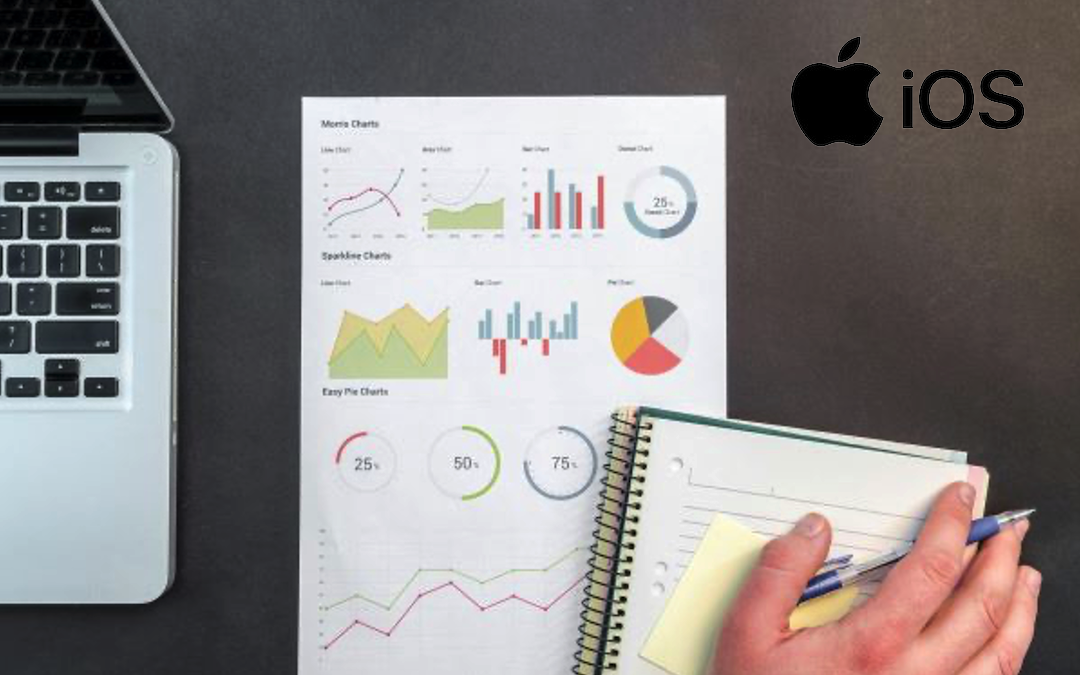
In the early days of the App Store, a great idea and solid execution were often enough for an iOS app development company to propel an iOS app to success. Today, however, the mobile landscape is fiercely competitive. Standing out requires a deep understanding of your users and how they interact with your app. This is where data-driven development comes in.
The power of data
Data is the lifeblood of any successful app. It provides insights into user behavior, identifies areas for improvement, and helps you validate (or invalidate) your initial assumptions. By leveraging data engineering practices within the iOS development process, you can create apps that are not only feature-rich but also truly user-centric.
What is data engineering?
Data engineering is the discipline of collecting, storing, processing, and analyzing data to extract valuable insights. In the context of iOS development, this translates to building the infrastructure and processes to capture user data within your app, store it securely, and transform it into actionable information.
Benefits of data-driven iOS development
Here's how embracing a data-driven approach can benefit your iOS app:
- Improved user experience (UX): By analyzing user behavior patterns, you can identify pain points and areas for improvement within your app. This data can guide you in optimizing workflows, personalizing user experiences, and ultimately creating a more intuitive and engaging app.
- Enhanced app performance: Data can reveal performance bottlenecks and crashes within your app. By analyzing crash reports and user behavior logs, you can identify areas for optimization, leading to a more stable and responsive app.
- Data-driven decision making: Move beyond guesswork and base your product roadmap on concrete data. User engagement metrics, feature usage data, and in-app purchase trends can inform strategic decisions about future development efforts.
- Increased user retention: Understanding why users churn (stop using your app) is crucial for long-term success. Data can help you identify factors leading to churn and implement strategies to re-engage users and improve retention.
- Monetization optimization: Data can reveal how users interact with your app's monetization features. This can inform strategies for in-app purchase pricing, subscription models, or targeted advertising, ultimately leading to increased revenue.
Building a data-driven development workflow
Here are the key steps involved in building a data-driven development workflow for your iOS app:
1. Define data collection strategy
Before diving in, determine what data is crucial for understanding user behavior and achieving your app's goals. This could include:
- User demographics and location
- In-app actions and feature usage
- App crashes and performance metrics
- User feedback and survey responses
2. Integrate data collection tools
There are several tools available in the iOS ecosystem to capture user data. Apple's built-in frameworks, like Core Motion and Core Location, can provide valuable insights into user activity. Additionally, third-party analytics platforms like Firebase or Flurry offer robust data collection and analysis capabilities.
3. Implement data storage and security
Collected data needs to be stored securely and reliably. Consider using cloud-based databases or on-premise solutions depending on your specific needs and data privacy regulations. Prioritize user privacy by anonymizing sensitive data and adhering to best practices for data security.
4. Data processing and transformation
Raw user data is rarely actionable. Data engineering tools and techniques are used to clean, transform, and aggregate data into a format suitable for analysis. This might involve tasks like data normalization, anomaly detection, and data enrichment.
5. Data visualization and analysis
Once your data is processed, tools like dashboards and reports can help you visualize trends and patterns. Data analysis techniques like A/B testing and statistical modeling can extract valuable insights that inform your development decisions.
6. Integrate data insights into development
The final step is to translate data insights into actionable changes within your app. This might involve prioritizing bug fixes, redesigning specific features, or implementing new functionalities based on user behavior.

Data engineering best practices for iOS development
Here are some additional tips to ensure effective data engineering within your iOS development process:
- Start early: Don't wait until your app is launched to start collecting data. Build data collection into the initial development phases to gain insights from the get-go.
- Focus on data quality: Ensure data accuracy and completeness to avoid basing decisions on faulty information. Regularly review and clean your data sets.
- Data governance: Establish clear policies for data collection, storage, and access. This protects user privacy and ensures responsible data handling.
- Embrace a culture of experimentation: Use data to test hypotheses and iterate on your app design. A/B testing allows you to compare different versions of features and see what resonates best with users.
Looking ahead: future of data-driven iOS development
The world of data is constantly evolving, and so too are the tools and techniques available for iOS developers. Here are some exciting trends to watch in the future of data-driven iOS development:
- Machine learning (ML) integration: ML algorithms can be leveraged to analyze user data and predict user behavior. This can inform personalized experiences, targeted recommendations, and proactive app suggestions.
- Real-time data analytics: Developments in cloud computing and data streaming technologies are paving the way for real-time data analysis. This allows for immediate feedback on user actions and enables developers to make adjustments to the app in real-time.
- Focus on user privacy: Data privacy regulations like GDPR and CCPA are becoming increasingly stringent. Developers will need to prioritize user privacy by implementing robust data anonymization techniques and offering users granular control over their data.
Conclusion
By embracing a data-driven development approach, you can transform your iOS app from a good idea to a thriving success story. Data provides the key to understanding your users, optimizing your app, and ultimately achieving your business goals. Remember, data is a powerful tool, but it's only as valuable as the insights you extract and the actions you take based on them.
Share this post
Leave a comment
All comments are moderated. Spammy and bot submitted comments are deleted. Please submit the comments that are helpful to others, and we'll approve your comments. A comment that includes outbound link will only be approved if the content is relevant to the topic, and has some value to our readers.

Comments (0)
No comment